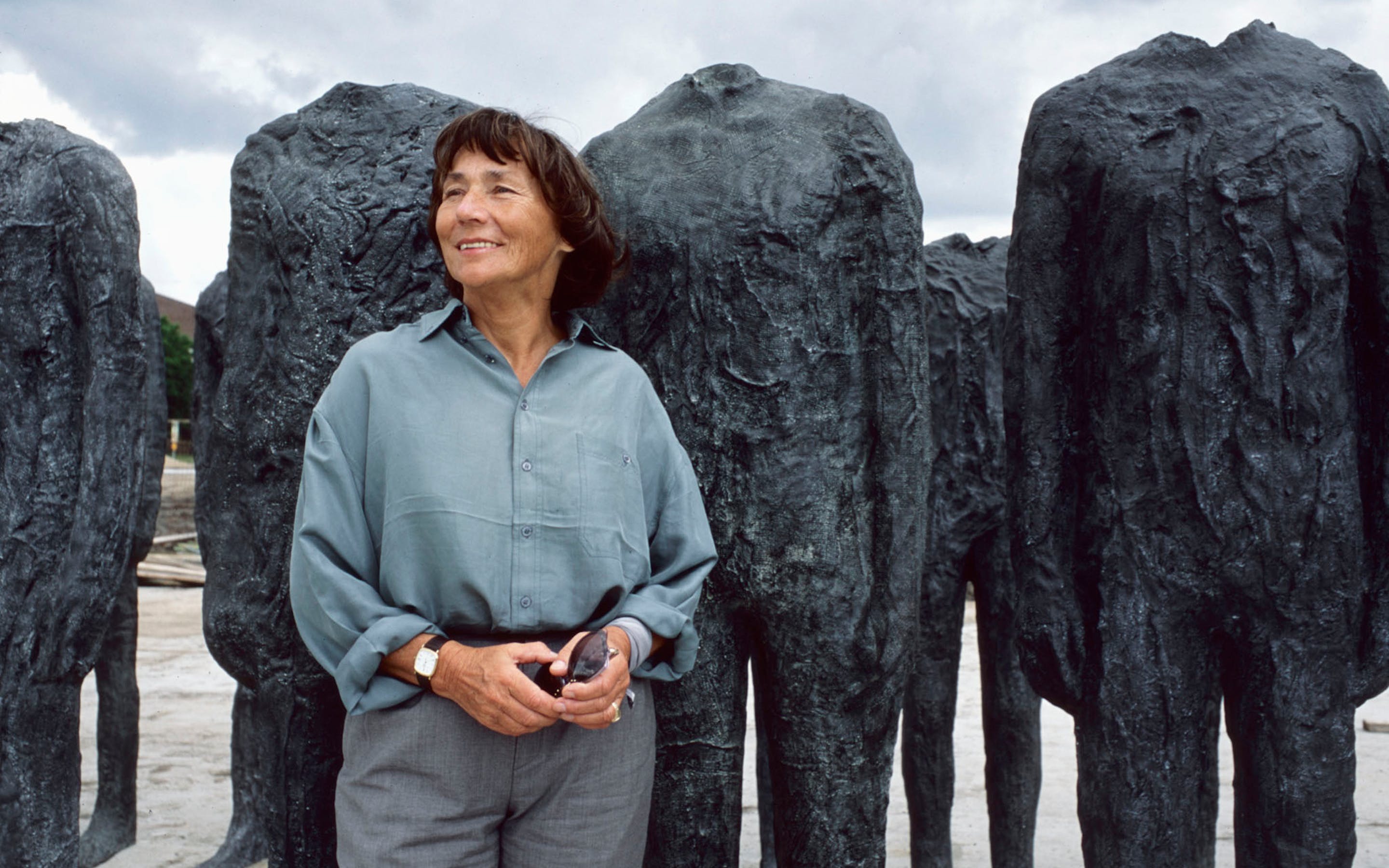Magdalena Abakanowicz: Celebrating the Pioneer of Abakans on her 93rd Birthday
Magdalena Abakanowicz was a renowned Polish sculptor who made significant contributions to the art world, particularly in the realm of textile and fiber sculptures. Born on June 20, 1930, in Falenty, Poland, Abakanowicz grew up in a country devastated by the effects of World War II and living under Communist rule. These circumstances had a profound impact on her life and shaped her artistic journey.
Abakanowicz's artistic education began in 1948 when she enrolled in the secondary school for plastic arts in Gdynia. She later pursued her studies at the prestigious Academy of Fine Arts in Warsaw, where she graduated in 1954. During the 1960s, Abakanowicz experimented with a new form of sculpture, which she called Abakans. These sculptures were made from woven fiber and defied conventional notions of art by transforming fabric into three-dimensional forms.
The Abakans were revolutionary for their time and challenged traditional boundaries between different artistic disciplines. Abakanowicz's installations, consisting of suspended and hanging textile sculptures, created an immersive and interactive experience for viewers. The unique combination of textiles and sculptural elements in her work established a new category of art, known as Abakans, which gained international recognition.
In 1965, Abakanowicz's innovative approach to sculpture garnered widespread acclaim when she received the top prize at the São Paulo International Art Biennale. This accolade further propelled her career and opened doors to numerous opportunities and exhibitions worldwide. Throughout her life, Abakanowicz received several prestigious awards, including the Lifetime Achievement Award from the International Sculpture Center in New Jersey, the Award for Distinction in Sculpture from the Sculpture Center in New York, and the Commander Cross with Star of the Order of Polonia Restituta in Poland.
One of Abakanowicz's most notable works is "Agora," created in the 1970s. Inspired by the sociological concept of the crowd, the sculpture symbolizes the loss of individuality within a collective. "Agora" consists of 106 iron cast figures, each over nine feet tall, arranged in a grid-like formation. This thought-provoking installation is permanently displayed in Grant Park, Chicago, serving as a powerful statement on the human condition.
Abakanowicz's impact on the art world extends beyond her innovative sculptures. Her works have been showcased in prestigious museums and galleries worldwide, with over 100 one-person exhibitions organized across Europe, the Americas, Japan, and Australia.
Magdalena Abakanowicz's artistic legacy is characterized by her fearless exploration of unconventional materials and techniques, her ability to evoke strong emotional responses through her sculptures, and her profound understanding of the human experience. Her contributions to the art world continue to inspire and captivate audiences, making her a celebrated figure in contemporary sculpture.
On June 20, 2023, Google honored Magdalena Abakanowicz's 93rd birthday with a special Google Doodle. The Doodle celebrated the Polish sculptor's groundbreaking contributions to the art world and her pioneering work in the category of art known as Abakans.
The Google Doodle depicted one of Abakanowicz's iconic Abakan sculptures, showcasing the interplay of woven fibers and three-dimensional form. The Doodle aimed to capture the essence of her innovative and thought-provoking artwork.
Google's blog post accompanying the Doodle highlighted the uniqueness of Abakanowicz's creations, blurring the lines between sculpture and tapestry. It acknowledged her significant impact as a Polish sculptor and multi-element artist.
By featuring Magdalena Abakanowicz's work in the Google Doodle, Google aimed to bring attention to her artistic achievements and inspire a wider audience to explore her contributions to the art world. The Doodle served as a tribute to her groundbreaking spirit and her ability to push artistic boundaries, leaving a lasting impact on contemporary sculpture.

Comments
Post a Comment